Understanding the lithium-ion battery life cycle is essential to maximize their longevity and ensure optimal performance. In this comprehensive guide, we will delve into the intricacies of the li-ion battery cycle life, explore its shelf life when in storage, compare it with lead-acid batteries, discuss the factors that contribute to degradation over time, and provide tips on how to increase the life cycle of a lithium-ion battery.
What Is The Lithium-Ion Battery Life Cycle?
The lithium battery life cycle is the overall life of the battery, including charge and discharge cycles. That is, the number of cycles a battery can go through before it starts to lose its charge is referred to as the battery’s life cycle. So what are the charge and discharge cycles of a lithium-ion battery?
The charge and discharge cycles of a lithium-ion battery are the total number of charge and discharge cycles that a battery can successfully undergo before its capacity drops significantly. The average number of lithium-ion battery charge cycles and discharge cycles is 500-1000. However, this number can vary depending on the battery’s quality and how it is used.
Why do lithium-ion batteries degrade over time?
Whether they are used or not, lithium-ion batteries have a lifespan of only two to three years.
Over time, lithium-ion batteries inevitably degrade due to various factors:
1. Temperature
Lithium-ion batteries are in a self-discharge process before use and are affected by extreme temperatures and humidity. Extremely high and low temperatures accelerate the lithium ion battery self-discharge, which is why we recommend storing your battery in a dry environment between 0°C and 20°C.
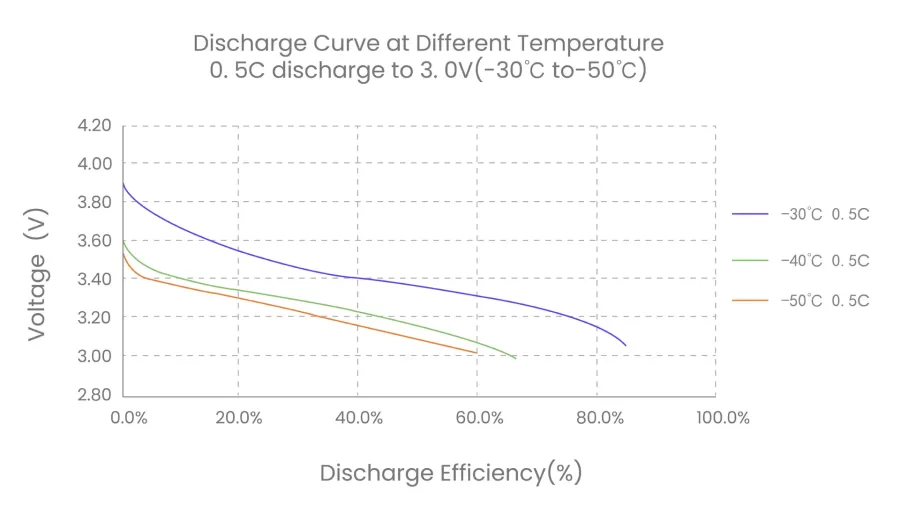
2. Charge Cycles
A charging cycle means the process of all the battery’s charge from full to empty, and then from empty to full, which is not the same as charging once. Simply put, for a 1000 mA lithium battery, you first charge it from 0 mA to 600 mA, after using N mA; then you charge it again with 200 mA, and then with N mA; and finally with 100 mA, and when the last charge reaches 100 mA, one charge cycle of this battery is up, because 600 mA + 200 mA + 100 mA + 100 mA = 1000 mA. A charge cycle is composed of a full charge and a full discharge process.
As you use and charge the battery, it slowly loses its ability to return to its original capacity.
The Li-ion battery typically has a lifespan of 300-500 charge cycles. Suppose a fully discharged lithium-ion battery provides 1Q of charge, and not considering the decrease in charge with each charge, the lithium-ion battery can provide or replenish a total of 300Q-500Q of charge over its lifetime. It can be seen that if charged to 1/2 each time, it can be recharged 600-1000 times; if recharged to 1/3 each time, it can be recharged 900-1500 times. And so on and so forth, with an indeterminate number of charges if they are randomized. In any case, no matter how you charge, the total amount of energy replenished remains constant at 300Q-500Q.
For sure, it is important to avoid overcharging lithium batteries, as any form of overcharging can cause serious damage to their performance, and even cause them to explode.
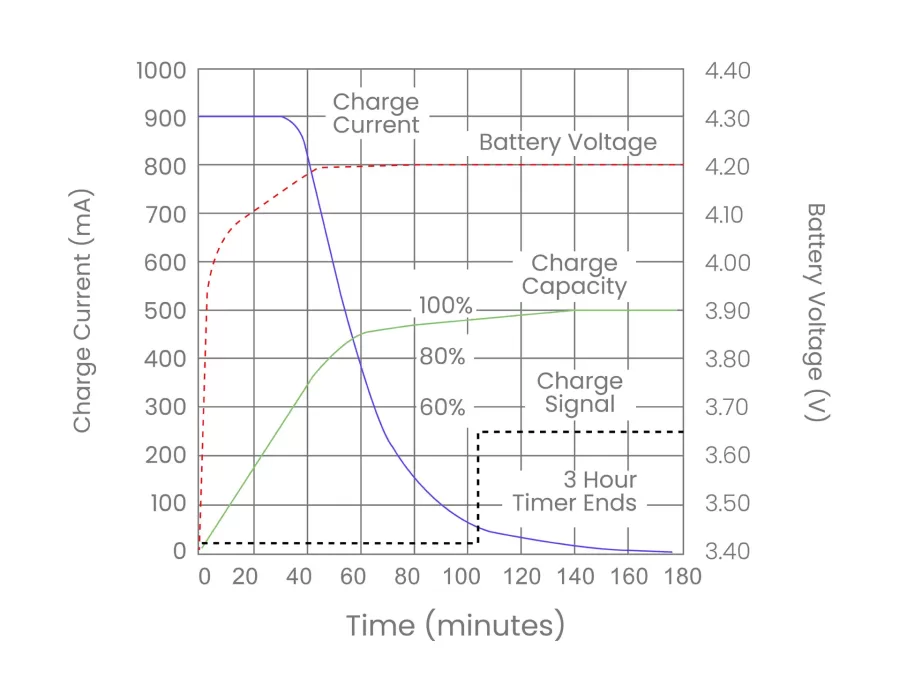
3. Depth of discharge
The depth of discharge (DoD) measures how much of a battery’s capacity is used before recharging. It significantly impacts the aging of Li-ion batteries: the lower the DoD, the less stress the battery endures, slowing its aging.
For example, a 100 mAh battery discharged to 50 mAh has a 50% DoD. Research from the University of California, San Diego illustrates this effect:
- A Li-ion battery cycled to 80% DoD lasted 500 cycles.
- One cycled to 20% DoD lasted only 200 cycles.
Batteries usually contain chemicals that undergo reversible chemical reactions to store and release energy. When a battery is charged, these chemicals are converted from one state to another to store energy. When the battery is discharged, the reverse chemical reaction occurs to release that stored energy as electricity. The amount of chemical reactions per charge/discharge cycle at a given temperature and discharge rate is proportional to the lithium ion depth of discharge chart. This means that the more deeply a battery is discharged, the more chemical reactions it undergoes and the shorter the battery’s life will be.
As shown in the figure below, the relationship between cycle life and depth of discharge are directly related, with a shallower DoD leading to exponential growth in the number of cycles produced by the battery.
Battery manufacturers typically specify a battery’s cycle life at 80% depth of discharge. This is because this DoD represents a good balance between battery life and performance. Deeper discharges will reduce battery life, but shallower discharges will also reduce performance. Similarly, the user can prolong the life of the battery by choosing a capacity just greater than the capacity required or by filling the battery before it is fully discharged.
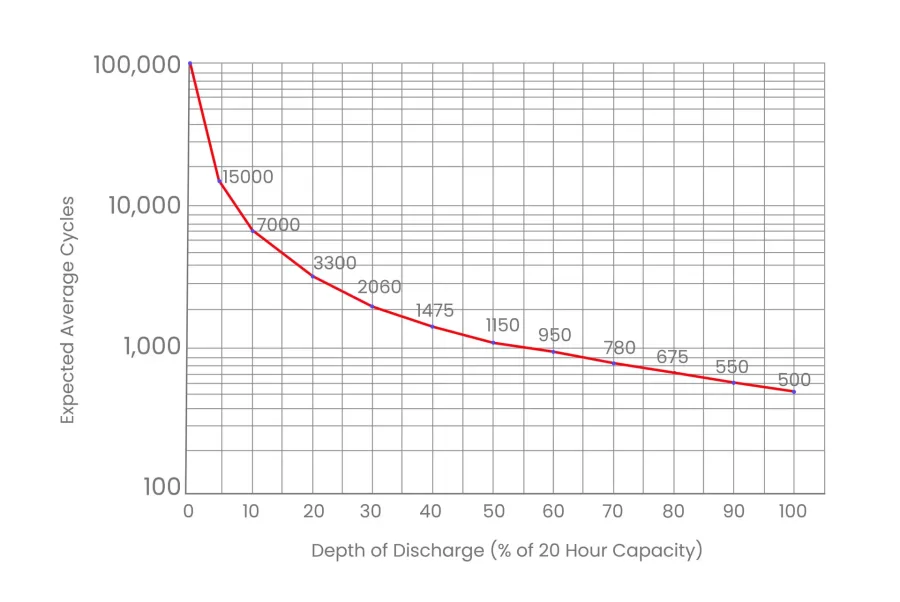
4. State of Charge
State of charge (SoC) is a measure of the remaining capacity of a battery. It is typically expressed as a percentage of the battery’s full capacity. For example, a battery with a 100 mAh capacity and a SoC of 50% would have 50 mAh remaining capacity.
Keeping lithium-ion batteries fully charged or fully discharged for long periods accelerates their aging.
5. Manufacturing Quality
The quality of the manufacturing process can also affect the lifespan of a lithium-ion battery. Batteries made from high-quality materials and assembled with care outlast those using low-quality materials or poor assembly.
How do I increase the life cycle of a lithium-ion battery?
Using and caring for your battery properly will help extend its life cycle. Follow these best practices to increase the life cycle of your lithium-ion battery.
1. Avoid Deep Discharges
As mentioned earlier, frequent deep discharges significantly impact battery aging. Try to maintain a moderate depth of discharge (DoD) range, preferably between 20-80%. Charging the battery before it reaches extremely low levels helps prevent stress-induced degradation.
2. Moderate Temperature Conditions
Li-ion batteries degrade faster when exposed to high temperatures. Avoid subjecting your device or battery to extreme heat sources, such as direct sunlight, car interiors on hot days, or leaving it in locations with high ambient temperatures for extended periods. Optimal operating temperatures are typically between 20-25 degrees Celsius (68-77 degrees Fahrenheit).
3. Avoid Overcharging
Overcharging a Li-ion battery can lead to increased voltage stress and heat generation, accelerating its aging. Most modern devices have built-in safeguards to prevent overcharging, but it’s a good practice to unplug your device once it reaches 100% charge. If you are using an external charger, ensure it has safety mechanisms to prevent overcharging.
4. Use the Provided Charger
Manufacturers design chargers specifically for their devices, accounting for the optimal charging voltage and current. To ensure the proper charging process, use the charger provided by the device manufacturer or reputable third-party chargers that are compatible with your device.
5. Maintain Moderate Charging Rates
While Li-ion batteries can fast charging, experts recommend using a moderate charging rate. Charging at a slower rate generates less heat and exerts less stress on the battery, resulting in slower aging. If your device offers “fast charging” options, use them judiciously and balance them with regular, slower charging for optimal battery health.
6. Avoid prolonged storage at high or low charge levels
If you intend to store your Li-ion battery for an extended period, it’s best to keep it at around 50% charge. Storing it in full or empty states for a prolonged duration can lead to capacity loss. If you anticipate not using your device or battery for an extended period, aim for a charge level close to 50%;
7. Do not drop or damage the battery
Dropping or damaging a lithium-ion battery can decrease the lifespan of lithium ion battery. In addition to exposing potentially dangerous leaks, internal parts such as the separator can become damaged, which can lead to short circuits.
8. Calibrate regularly
Some devices benefit from periodic battery calibration, such as laptops. This involves fully charging the battery, and then allowing it to discharge completely. Once discharged, recharge it back to full capacity. This process helps recalibrate the battery’s internal circuitry and improves the accuracy of the battery’s charge level reporting.
By following these guidelines, you can help maximize your Li-ion battery’s life cycle, maintain its performance, and ensure long-term reliability.
What Is The Lithium Battery Shelf Life That Is In Storage?
When a lithium-ion battery is not in use and is stored properly, it will gradually lose some of its charge over time. This self-discharge process occurs due to the battery’s internal reactions. The rate of self-discharge varies depending on the chemistry of the battery, the storage temperature, and the state of charge of the battery.
In general, lithium batteries last 3–5 years when stored at room temperature (20–25°C) with a 50% state of charge.
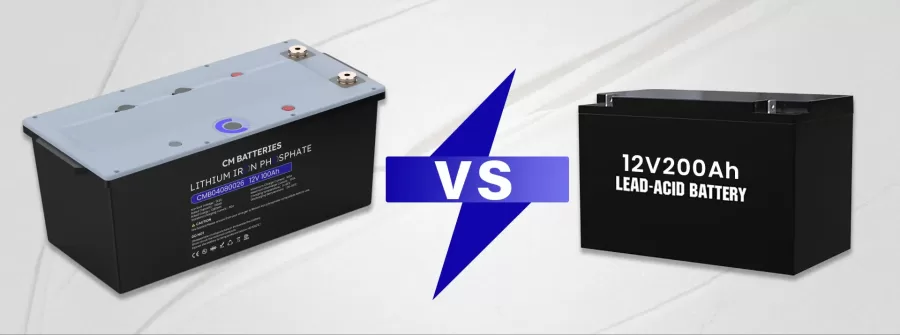
Lead Acid Battery vs Lithium Ion Battery Life?
Lithium-ion and lead-acid batteries are both rechargeable batteries, but they have different advantages and disadvantages. The life cycle of lithium-ion and lead-acid batteries varies depending on the manufacturer, model, and usage conditions. However, lithium-ion batteries generally have a longer life cycle than lead-acid batteries.
In the table below, we compared the battery performance and life cycle of 12V 200Ah lead-acid battery and 12V 100Ah lithium iron phosphate battery.
| Feature | Lead-acid battery 12V 200Ah | Lithium iron phosphate battery 12V 100Ah |
| Depth of discharge (DoD) | 50% | 100% |
| Battery Life | 10% DOD>1500 cycles 50% DOD>200cycles | 10% DOD>6000 cycles 100% DOD>2000 cycles |
| Weight | 65kg | 11kg |
| Self-discharge | Avg.33% per month | 2-3% per month |
| Warranty | 2-3 years | 10 years |
| Waterproof Level | IP65 | IP68 |
| Battery Protection | Non-existent | Internal BMS |
From the table, we can see that lithium iron phosphate batteries are lighter and more durable than lead-acid batteries, on the other hand, lithium iron phosphate batteries are more environmentally friendly, so it is gradually replacing lead-acid batteries.
Summary
As lithium-ion batteries become a bigger part of our everyday lives, it becomes increasingly important to maximize their lifespan and improve their performance. By implementing recommended practices such as avoiding extreme conditions, optimizing charging, maintaining moderate discharge rates, performing regular maintenance, and using proper storage techniques, users can significantly improve the life cycle of their lithium-ion batteries. This will ultimately contribute to a more sustainable and efficient use of these powerful energy solutions.
We sincerely hope that you have found this article helpful. Feel free to contact us with any additional questions!

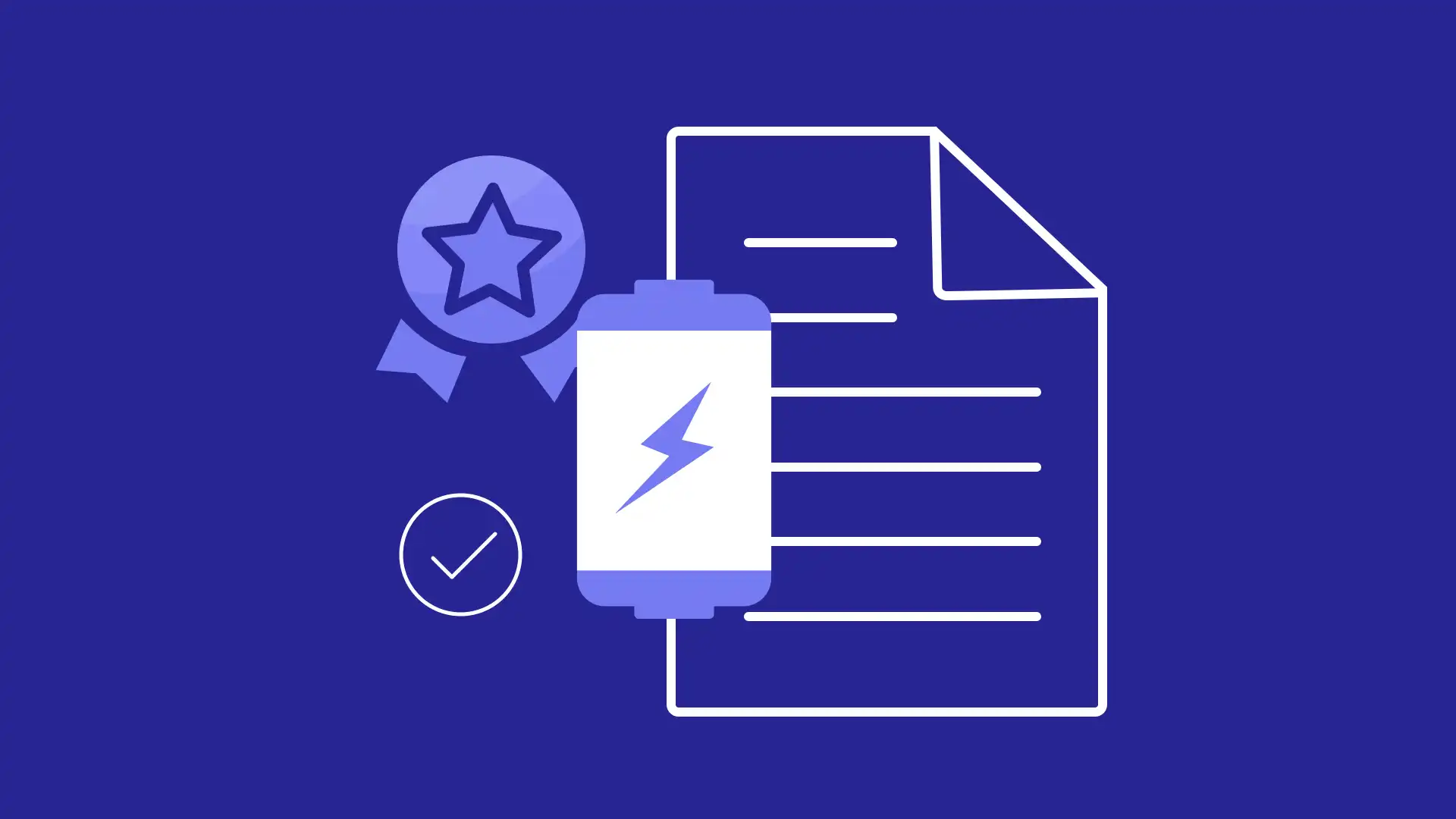
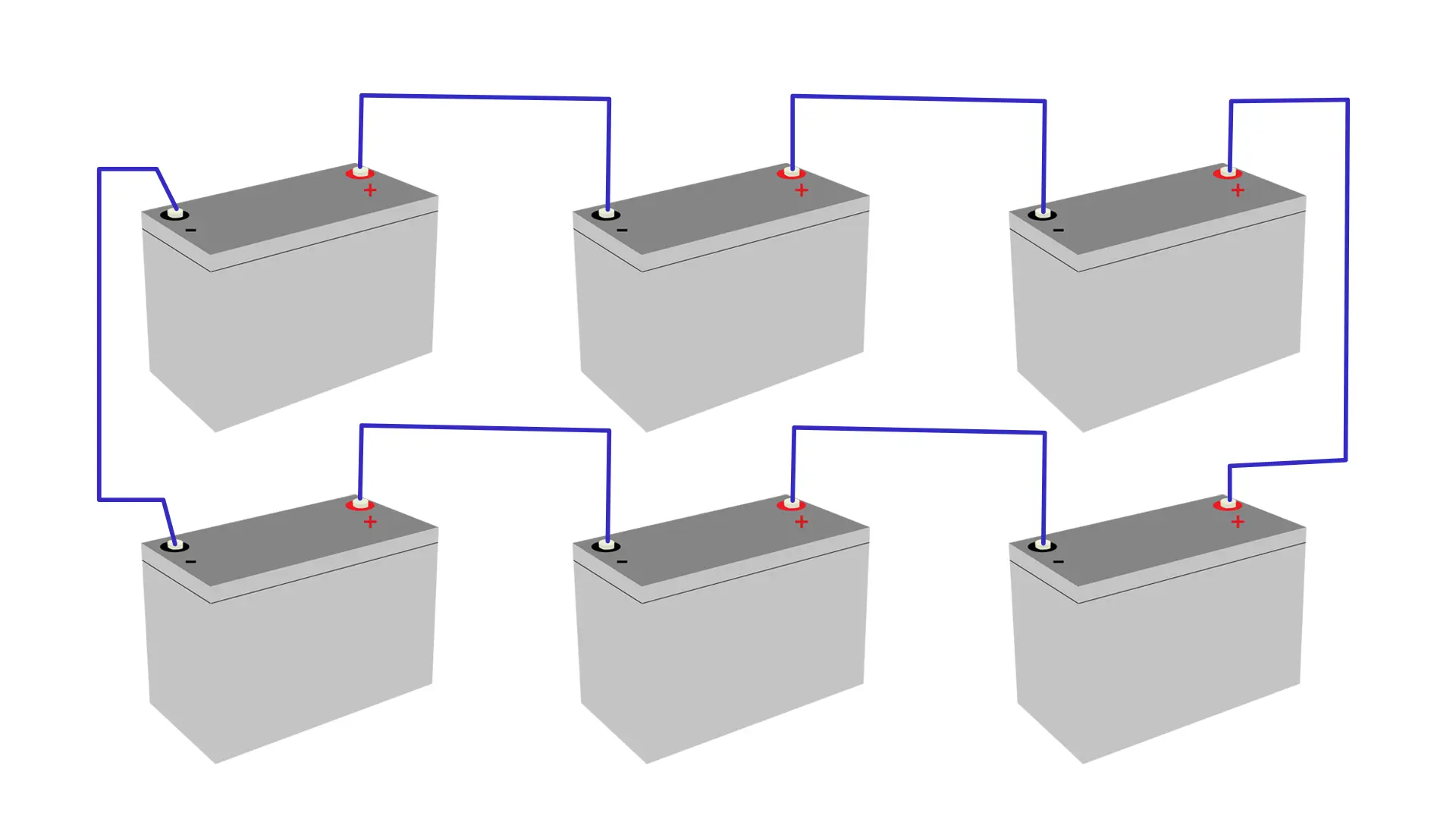
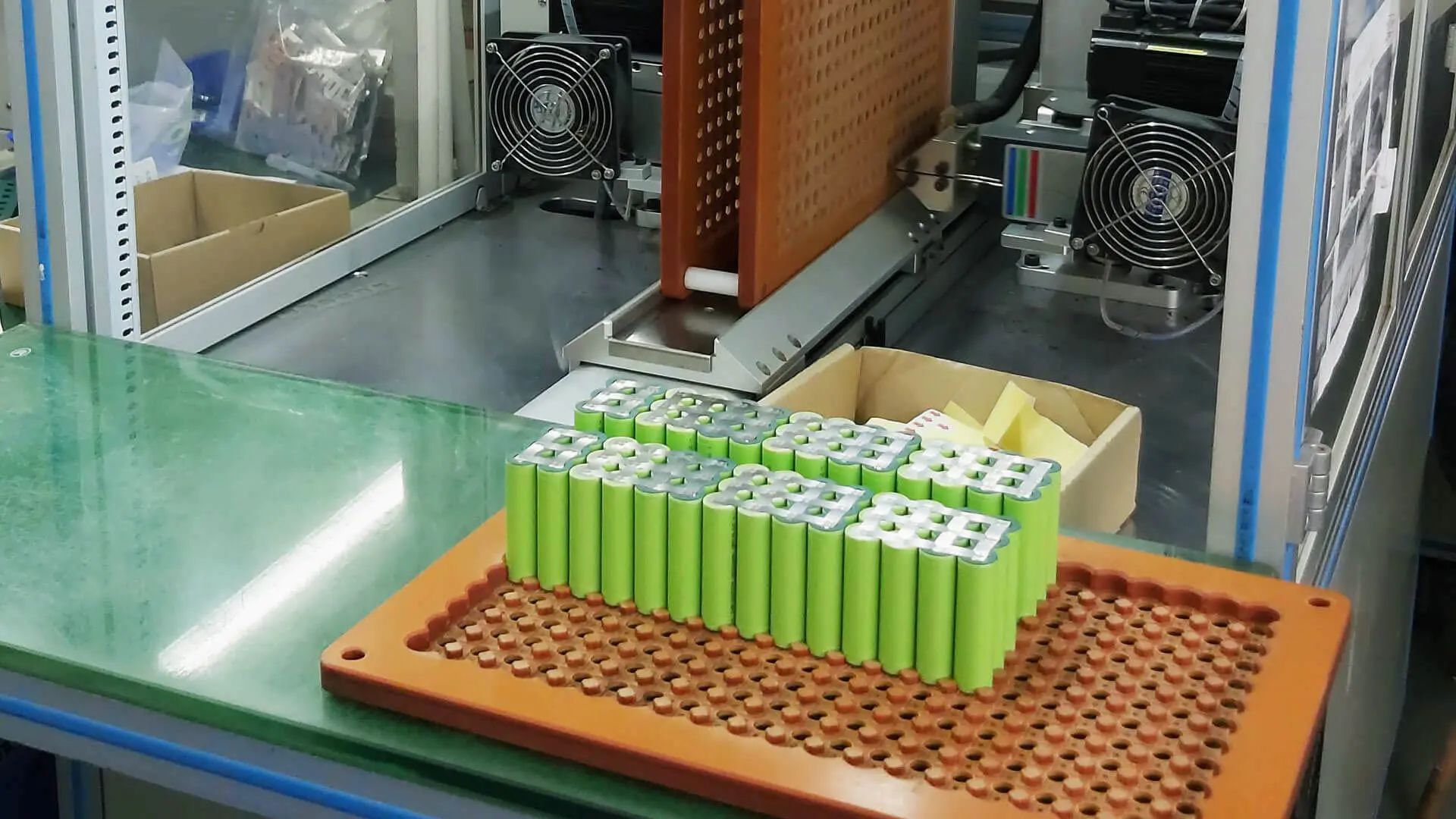
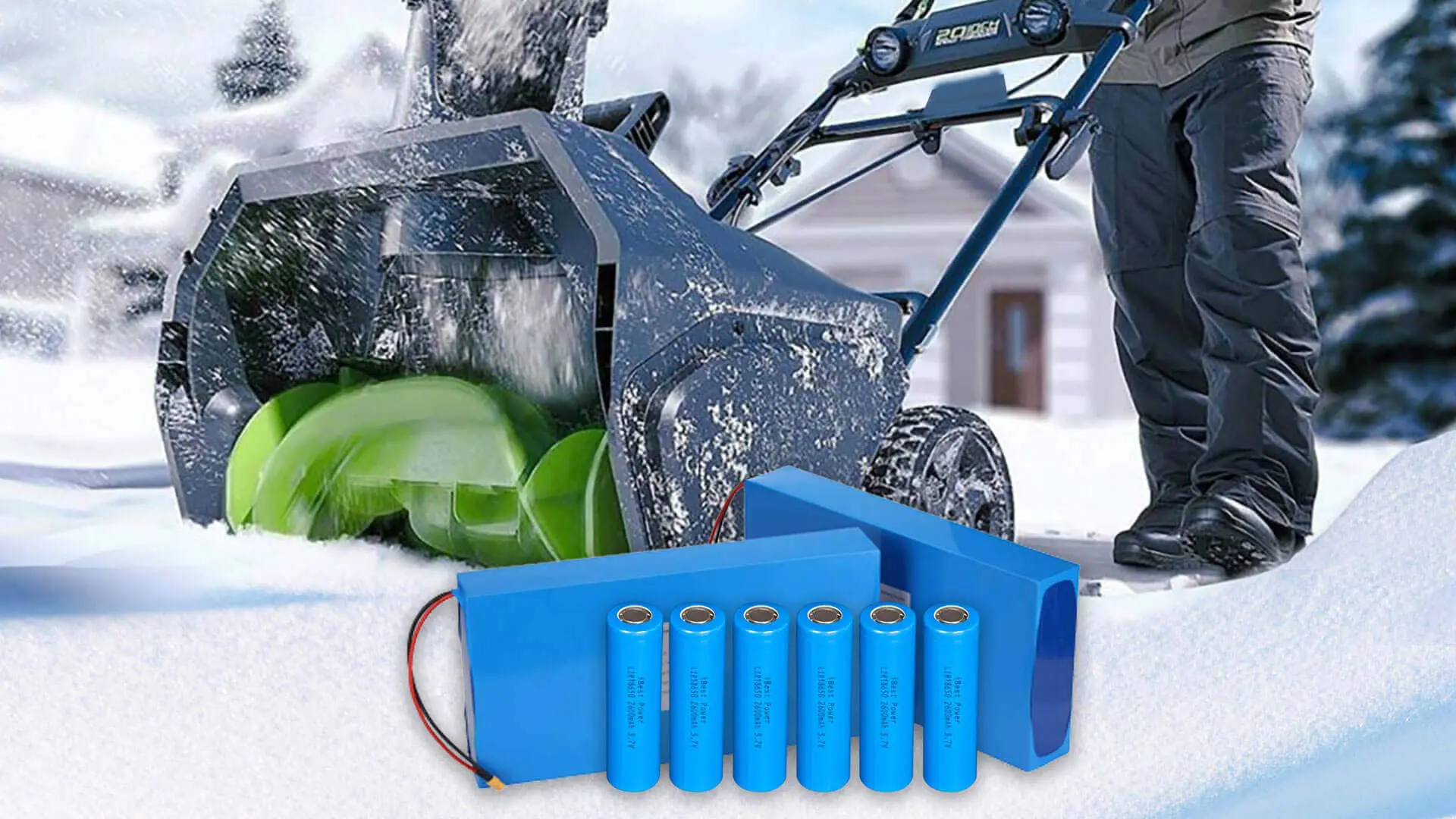
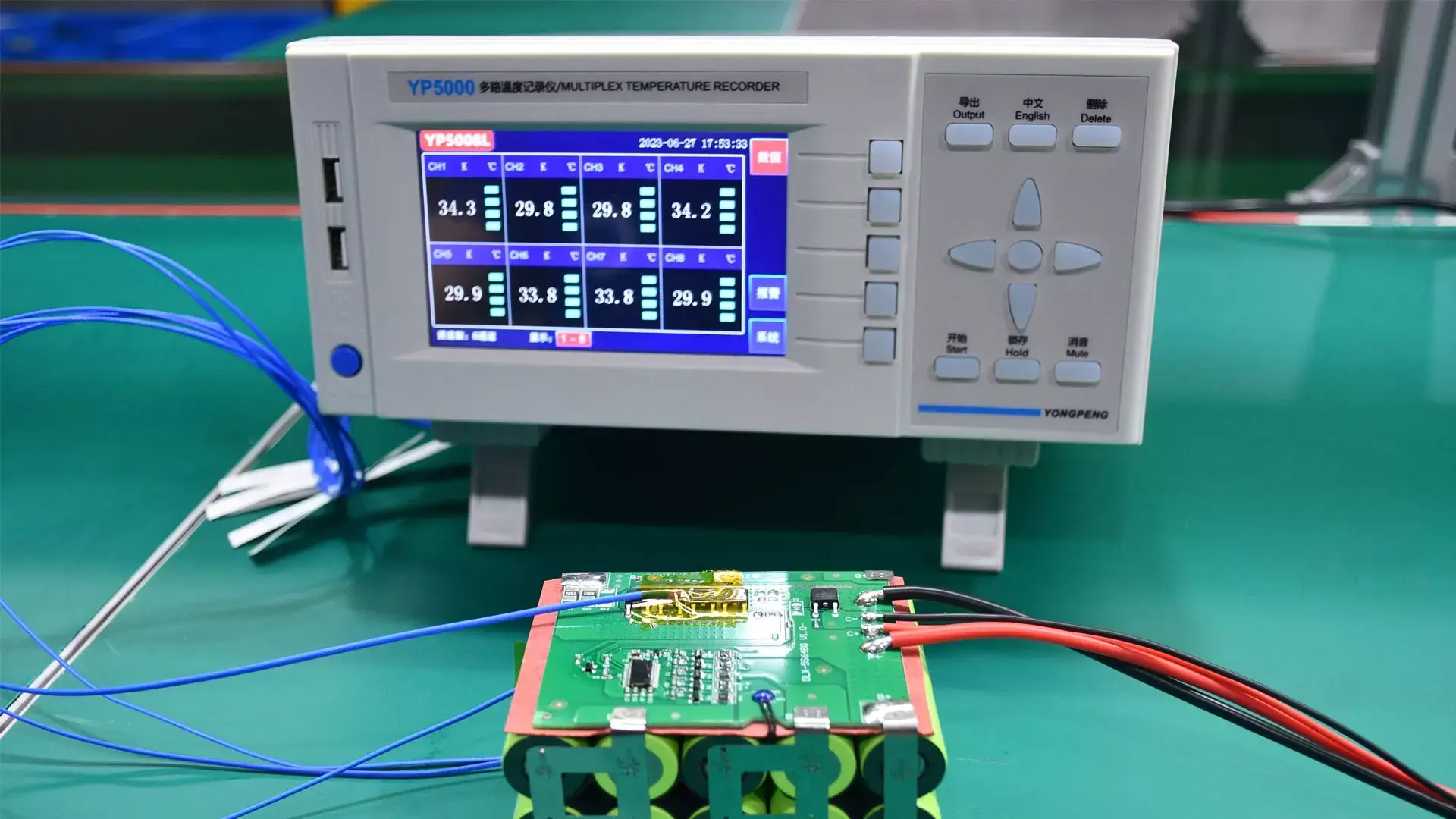
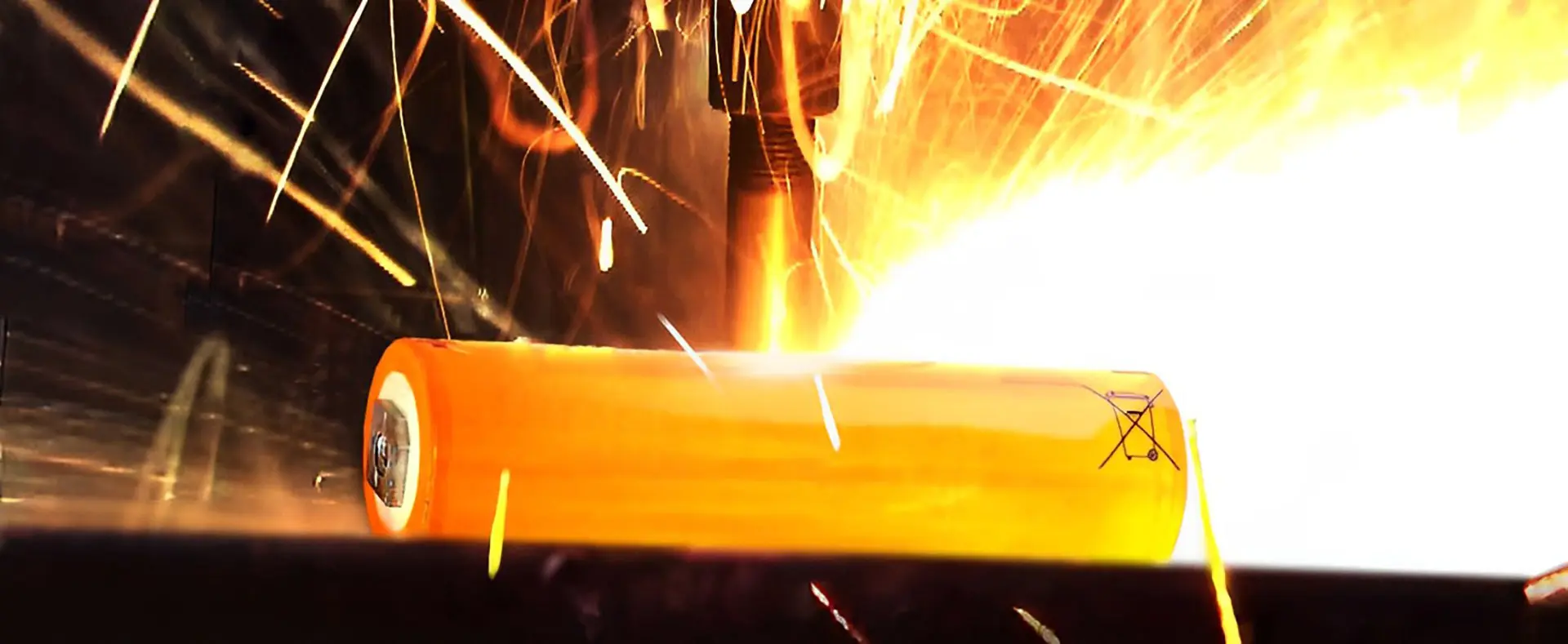
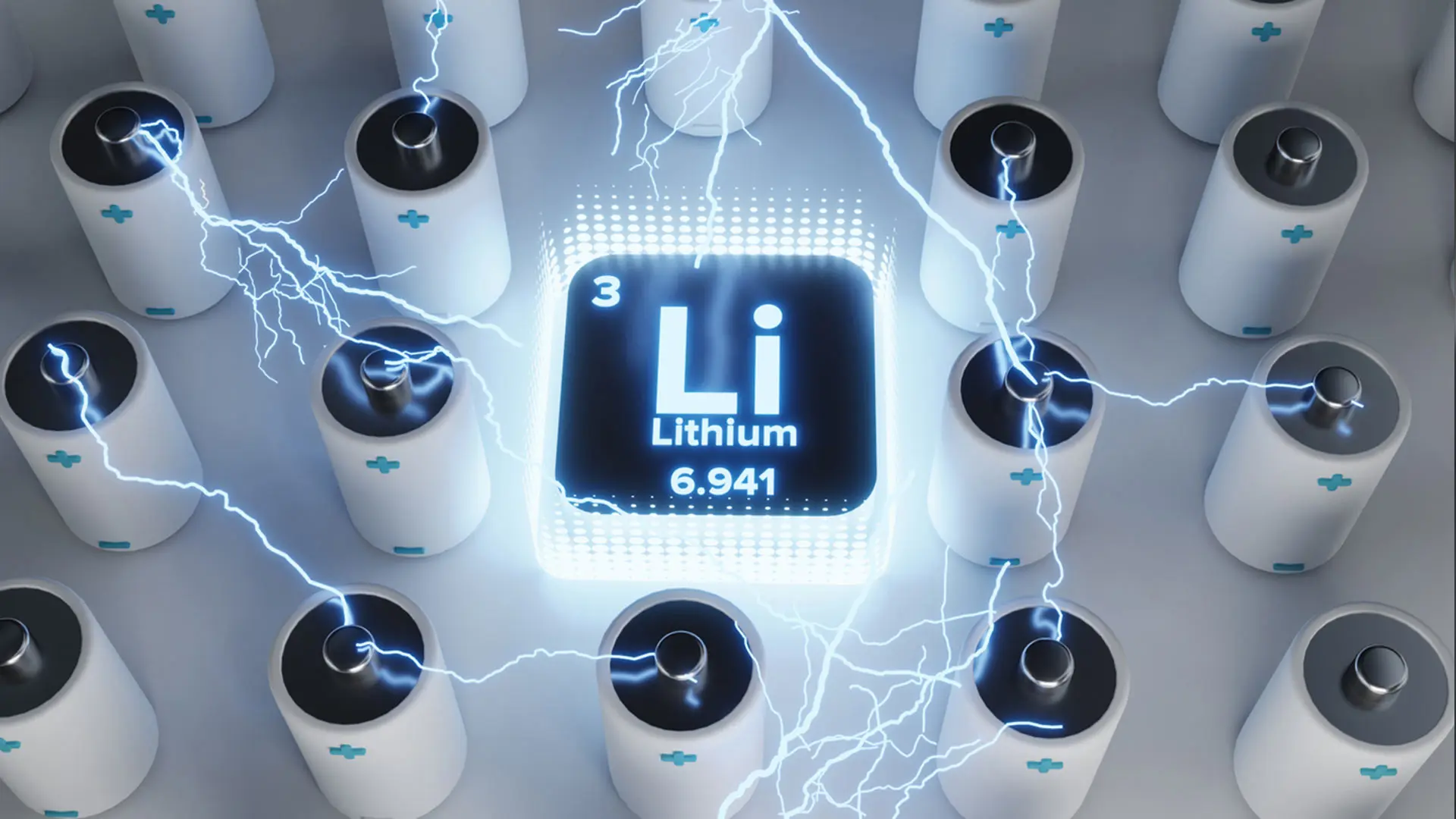

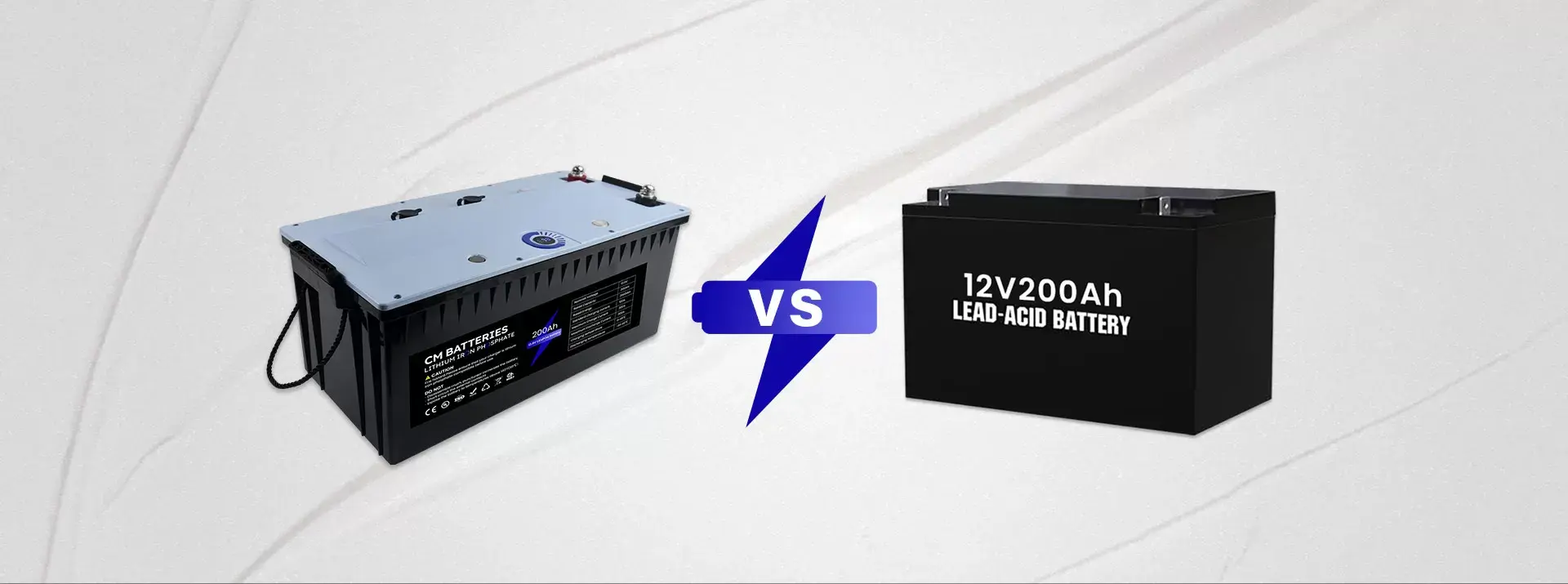
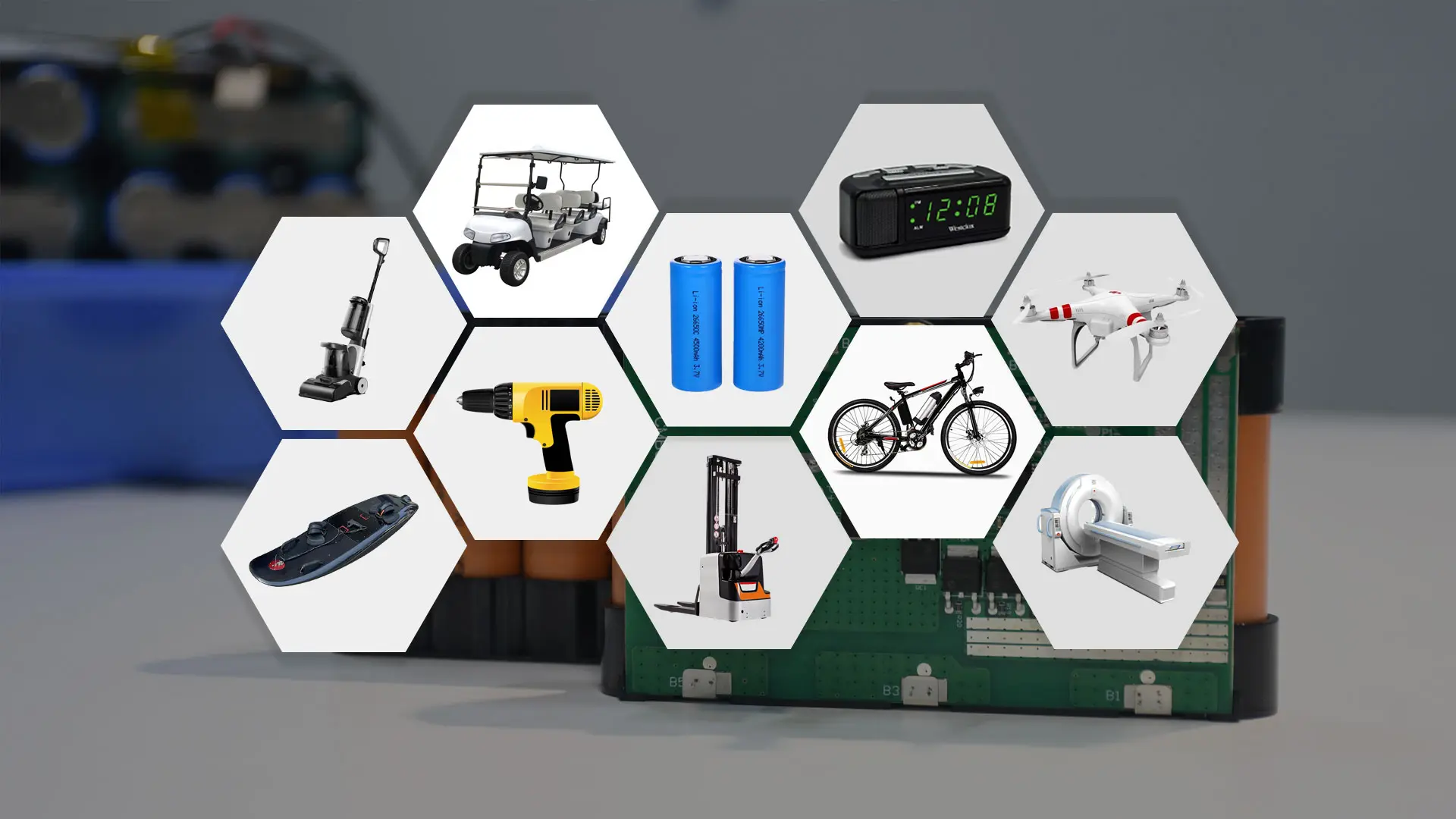

2 thoughts
très instructif, merci !